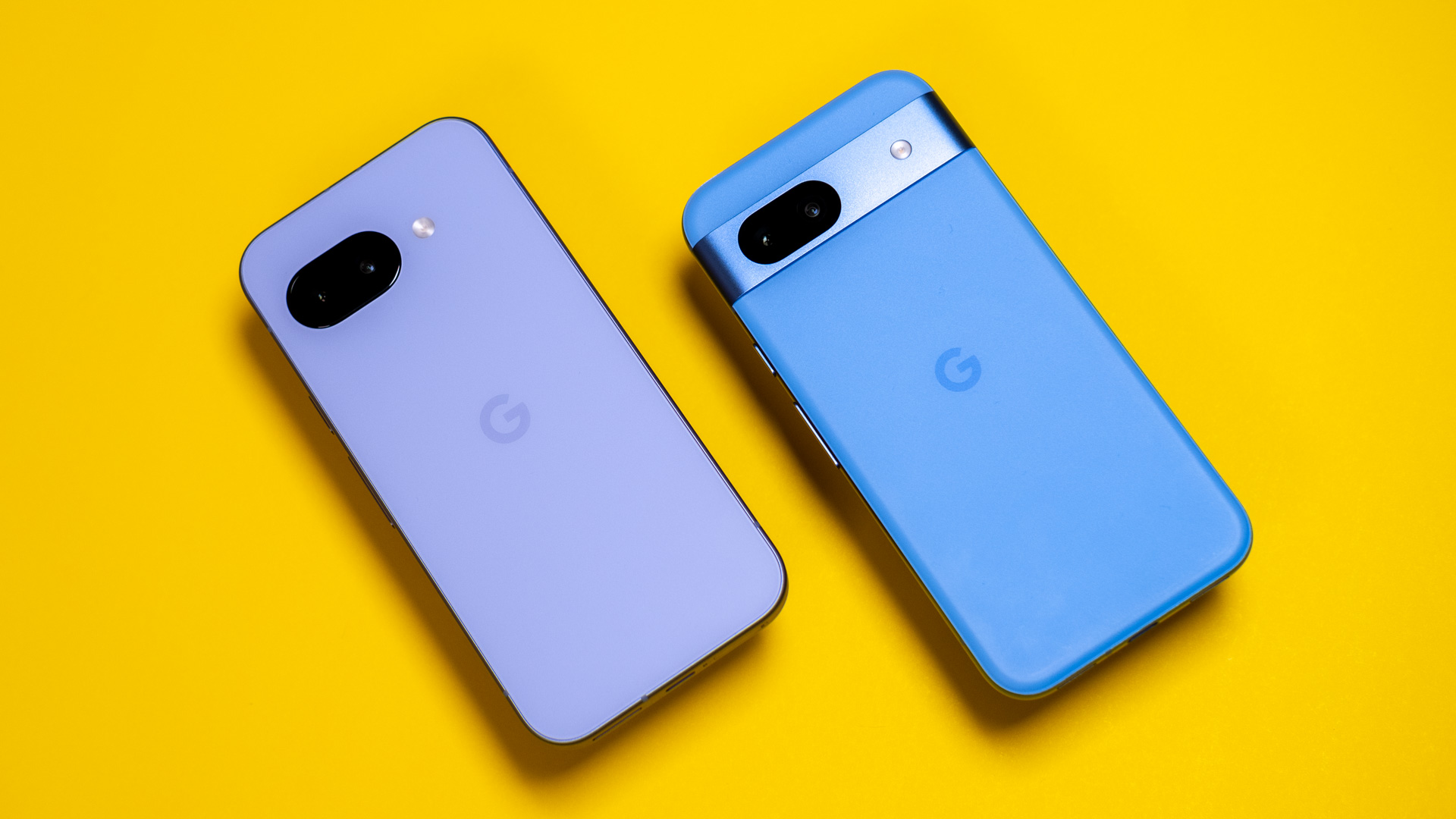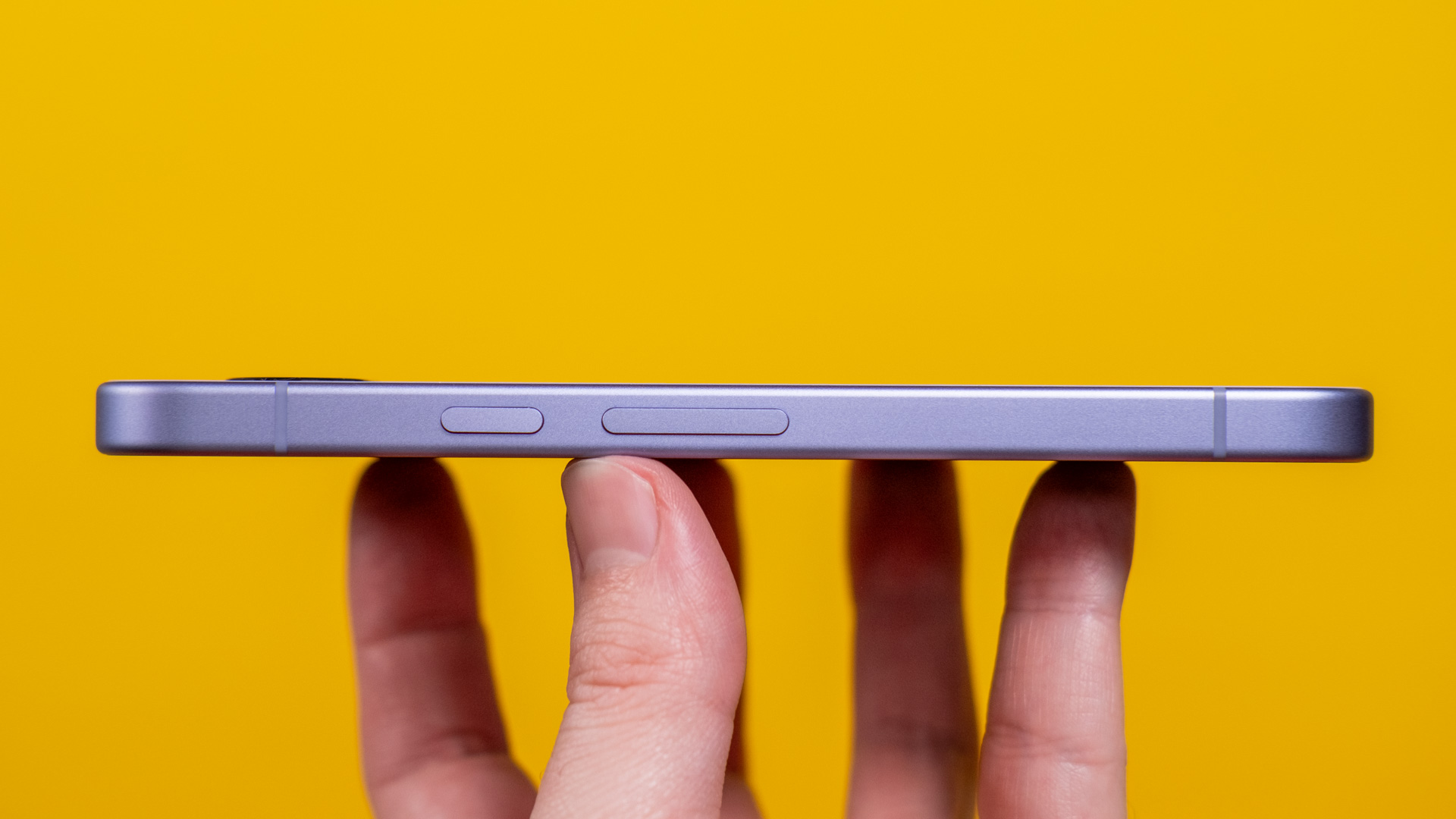The move to a pOLED display saved a few millimeters, giving the designers a bit more internal volume. In the past, Google has always pushed toward thinner and thinner Pixels, but it retained the same 8.9 mm thickness for the Pixel 9a. Rather than shave off a millimeter, Google equipped the Pixel 9a with a 5,100 mAh battery, which is the largest ever in a Pixel, even beating out the larger and more expensive Pixel 9 Pro XL by a touch.
The Pixel 9a (left) drops the camera bar from the Pixel 8a (right).
Credit:
Ryan Whitwam
The camera module on the back is almost flush with the body of the phone, rising barely a millimeter from the surrounding plastic. The phone feels more balanced and less top-heavy than phones that have three or four cameras mounted to chunky aluminum surrounds. The buttons on the right edge are the only other disruptions to the phone’s clean lines. They, too, are aluminum, with nice, tactile feedback and no detectable wobble. Aside from a few tiny foibles, the build quality and overall feel of this phone are better than we’d expect for $499.
The 6.3-inch OLED is slightly larger than last year’s, and it retains the chunkier bezels of Google’s A-series phones. While the flagship Pixels are all screen from the front, there’s a sizable gap between the edge of the OLED and the aluminum frame. That means the body is a few millimeters larger than it probably had to be—the Pixel 9 Pro has the same display size, and it’s a bit more compact, for example. Still, the Pixel 9a does not look or feel oversized.
The camera bump just barely rises above the surrounding plastic.
Credit:
Ryan Whitwam
The OLED is sharp enough at 1080p and has an impressively high peak brightness, making it legible outdoors. However, the low-brightness clarity falls short of what you get with more expensive phones like the Pixel 9 Pro or Galaxy S25. The screen supports a 120 Hz refresh rate, but that’s disabled by default. This panel does not use LTPO technology, which makes higher refresh rates more battery-intensive. There’s a fingerprint scanner under the OLED, but it has not been upgraded to ultrasonic along with the flagship Pixels. This one is still optical—it works quickly enough, but it lights up dark rooms and lacks reliability compared to ultrasonic sensors.






